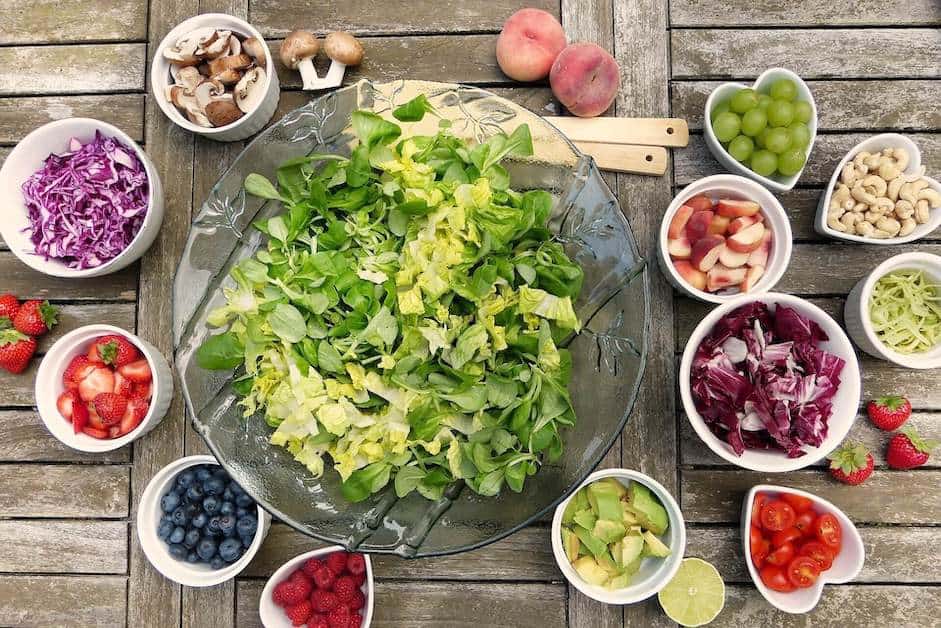Veganuary or Regenuary? How to transition to a climate-friendly diet in 2021

We all know that New Year’s resolutions rarely last – and if like many, you’ve decided to try out the latest fad diet in 2021 and found yourself slipping off the bandwagon, chances are you’re not alone.
But what if there’s a way of eating that is nourishing for our bodies, and sustainable in the long-term? Not only that, but the food we consume would give back to the planet, gradually helping to overturn decades of environmental degradation?
It’s thought that we’re more likely to stick to our goals if they’re aligned with our broader values, and addressing the climate crisis is no doubt at the top of many of our agendas, with environmental charity Hubbub finding that 1 in 6 people are resolved to reduce their impact on the planet in 2021. And with agriculture contributing around one quarter of global greenhouse gas emissions, assessing what’s on our plates is one of the most impactful ways that we can reduce our carbon footprints, and become part of the solution.
Enter Veganuary – and Regenuary. The former, which has already seen a record half a million sign-ups this year, challenges participants to adopt a vegan diet for 31 days, while Regenuary encourages consumers to stick to produce that has been grown and reared using regenerative farming practices. This means that farmers seek to restore and improve resources such as soil biodiversity, which allows the soil to hold excess water and sequester carbon, as well as encourage a more diverse and harmonious ecosystem.
And while the two movements have sometimes been pitted against each other, it is clear that they share a goal of reducing the environmental impact of our diets in the New Year, and becoming more conscious about where and how we source our food. As people who spend every day communicating about the importance of protecting the environment, we’re invested in finding more sustainable ways of eating, and by adopting a combination of principles from both challenges, our team are working to transition towards a diet that is better for ourselves – and for the planet:
1. Reduce your consumption of meat and animal products

As outlined by EIT Food – Europe’s leading food innovation initiative – a collective shift towards plant-based eating would make a huge difference to the greenhouse gas emissions of our diet. In 2018, researchers at Oxford University found that even sustainably produced meat and dairy had a greater environmental impact compared with plant alternatives, so reducing your consumption of animal products by 50% could get you well on your way to a more climate-friendly dinner.
You can try replacing meat with lentils, chickpeas, or tofu, and swap dairy milk for a plant-based alternative – oat is currently winning for its sustainable production.
The #AlternativeProteins trend will continue in 2021 says @mintelnews.
— EIT Food (@EITFood) January 9, 2021
At #VentureSummit20, @PaulHShapiro said the market's biggest challenge is being competitive on price. @DaniNierenberg & @GiuseppeScionti explore why this may change: https://t.co/31ENMAM150 #FoodTrends pic.twitter.com/NtcdxdNEIw
2. Shop organic
Whether you’re shopping for animal or plant products, it’s worth looking for organic labels, guaranteeing that your food is free from harmful herbicides which can damage the environment. Organically reared animals are not fed antibiotics, which helps to minimise antibiotic resistance.
3. Buy food that is grown locally, and in season
As well as helping to support small, independent and family-run businesses, buying food from your local farm shop or farmers market reduces the carbon footprint of your lunch by avoiding the emissions produced by plane travel and long lorry trips, The Nature Friendly Farming Network have compiled a helpful list of farmers who are delivering to their local areas.
Out of season food often needs to be flown thousands of miles, so when you’re not shopping local, check out a seasonal food chart to keep your environmental impact low.
Where we purchase our food has never been more important for our community. Your local farmer needs you, and here's how you can support them today. #NatureFriendlyFoodhttps://t.co/AqoJSlW2PD pic.twitter.com/pM0asexnZE
— Nature Friendly Farming Network (@NFFNUK) April 16, 2020
4. Support businesses which invest in regenerative farming
Once your own plate is climate-friendly, you can become an even greater champion for the environment by considering how you might invest in the future of regenerative farming. For instance, Jordans – the brand behind a delicious range of cereals – are working with The Wildlife Trusts as part of The Jordans Farm Partnership, which supports over 30 farms to sustain local wildlife on at least 10% of their land. Jordans also offer a Sustainable Agriculture Bursary to six new UK undergraduates every year, supporting the next generation of sustainable farming experts.
Through the #JordansFarmPartnership, @WildlifeTrusts farm advisors, are helping farmers who grow oats for @JordansCereals provide habitat and support wildlife on their farms.https://t.co/6qh6sYG06O @JordansCereals pic.twitter.com/xXkNR7k3Jm
— The Wildlife Trusts (@WildlifeTrusts) November 23, 2019
Taking the time to investigate the brands on your shopping list can help you to put your money towards businesses that are truly committed to regenerative practices in the long-term.
5. Educate yourself about sustainable food systems
Knowledge is power, and we’d recommend EIT Food and the Nature Friendly Farming Network as great resources to dive deeper into the connection between the climate and your diet, and learn about pioneering developments in food and farming.
We hope you find these tips useful – our team is looking forward to implementing them in order to sustain a healthy diet for ourselves and the planet, well into 2021 and beyond.


